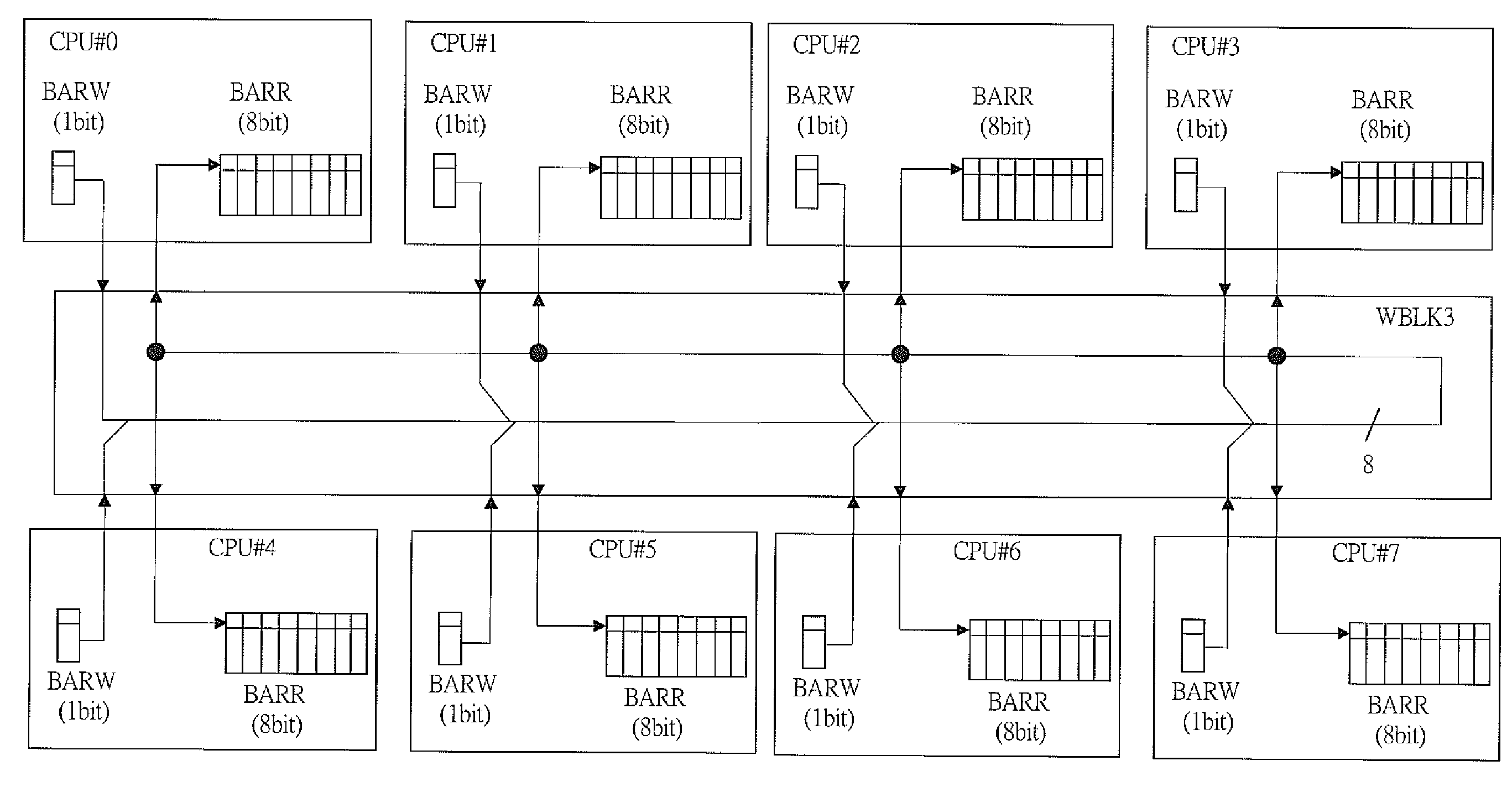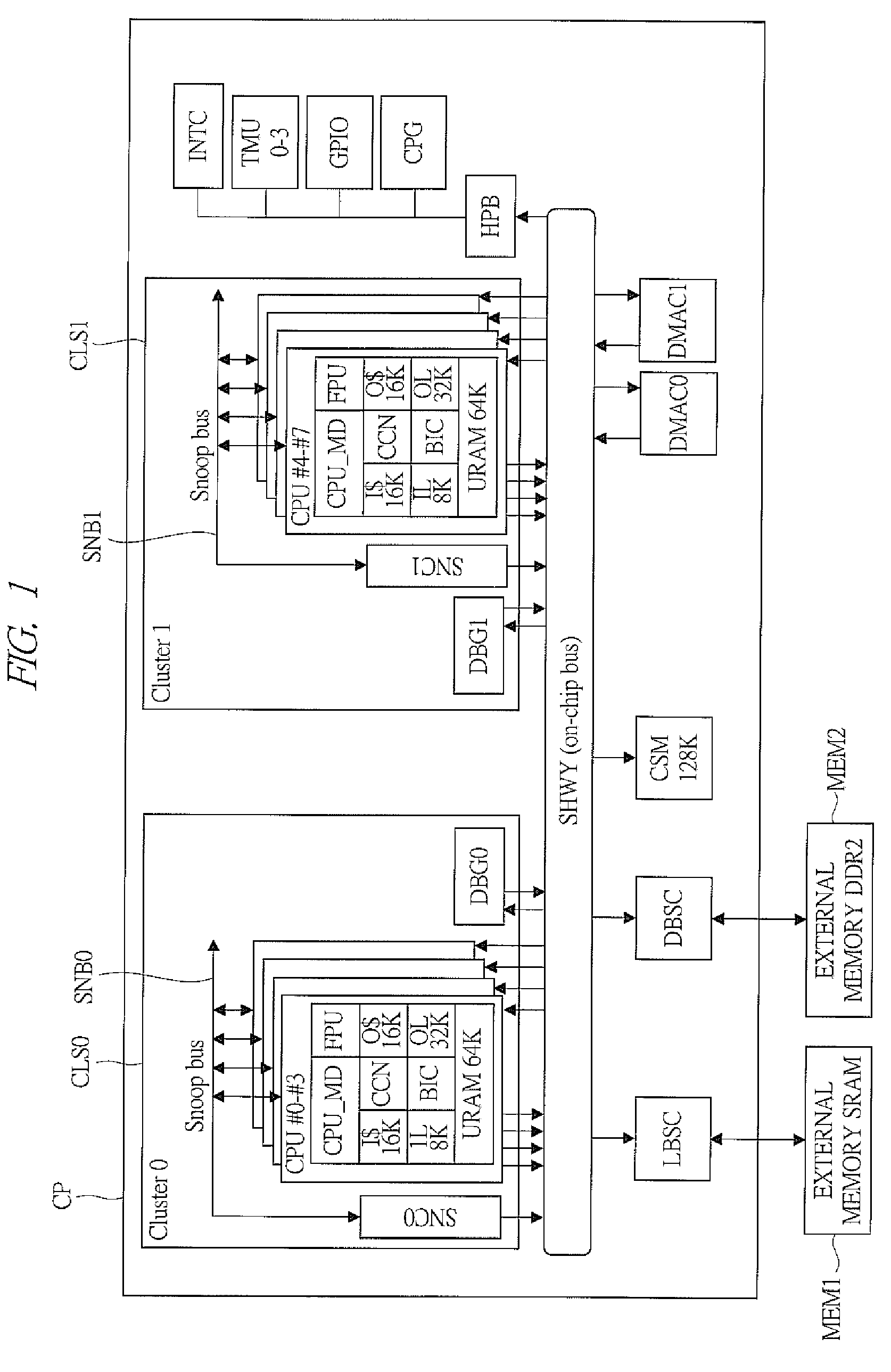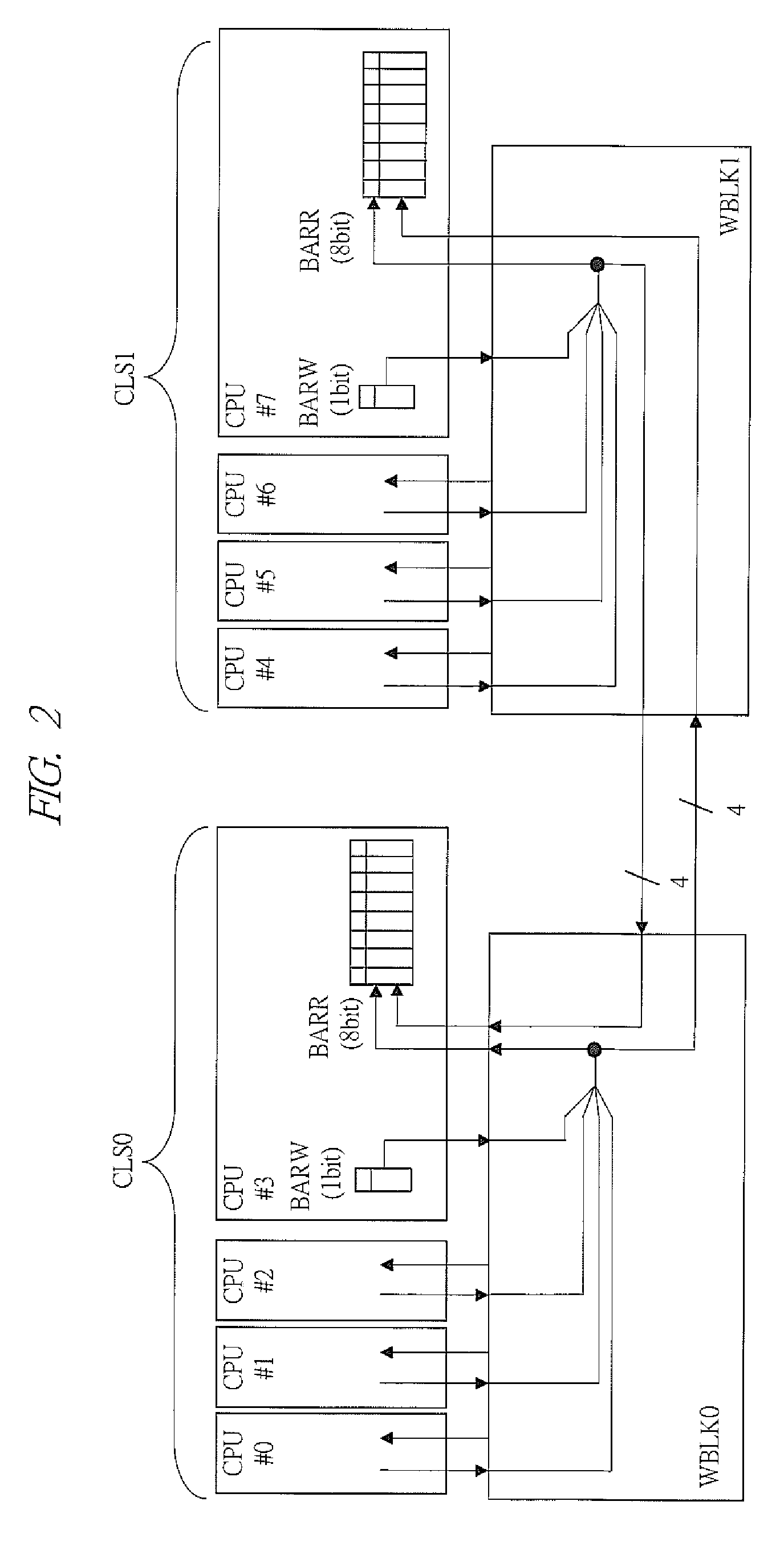Multiprocessor system and method of synchronization for multiprocessor system
a multi-processor system and multi-processor technology, applied in the field of multi-processor system and a synchronization method of the same, can solve the problems of time consumed to complete the barrier synchronization, process may consume time, and it is difficult to carry out etc., to achieve high-speed barrier synchronization processing, speed can be increased, and the effect of barrier synchronization processing
- Summary
- Abstract
- Description
- Claims
- Application Information
AI Technical Summary
Benefits of technology
Problems solved by technology
Method used
Image
Examples
first embodiment
[0044]FIG. 1 is a block diagram showing an example of an entire configuration of a multiprocessor system according to a first embodiment of the present invention. The multiprocessor system shown in FIG. 1 has, for example, a semiconductor chip CP including processors, etc., an external memory MEM1 such as an SRAM (Static Random Access Memory), and an external memory MEM2 such as a DDR2-SDRAM (Double Data Rate 2 Synchronous Dynamic Random Access Memory). The semiconductor chip CP is, though not particularly limited to this, formed on a semiconductor substrate of, for example, silicon, by a publicly-known CMOS fabrication method.
[0045]The semiconductor chip CP contains, though not particularly limited to this, a system bus SHWY. To the SHWY, a plurality of (herein, two) clusters CLS0 and CLS1, memory controllers LBSC and DBSC, a shared memory CSM, DMA (Direct Memory Access) controllers DMAC0 and DMAC1, a peripheral bus bridge HPB, etc. are connected. On the other side of HPB, a clock ...
second embodiment
[0068]FIG. 7 is a schematic diagram showing a configuration example of a main part of a multiprocessor system according to a second embodiment of the present invention. In the abovedescribed first embodiment, the configuration example in which the barrier write register BARW and the barrier read register BARR are different registers (in the case of the address mapped register, a register in which addresses are individually allocated) has been shown. On the other hand, the multiprocessor system shown in FIG. 7 has a feature that the barrier write register BARW and the barrier read register BARR in abovedescribed FIG. 3 are integrated and serve as a common barrier register BAR. In FIG. 7, each of a plurality (herein, eight) of processors CPU#0 to CPU#7 has an 8-bit barrier register BAR. The equivalent bits in the barrier registers BAR are mutually connected by direct wiring by a wiring block WBLK5. More specifically, for example, eight bits [0] of BAR contained in the CPUs CPU#0 to CP...
third embodiment
[0071]FIG. 8 is a schematic diagram showing a configuration example of a main part of a multiprocessor system of a third embodiment of the present invention. The multiprocessor system shown in FIG. 8 has a feature that one of the plurality of processors CPUs (herein, CPU CPU#0) serves as a master and that the master proactively monitor the synchronization stand-by state of the other CPUs, thereby reducing the number of bits of the barrier read register BARR compared with the abovedescribed case of FIG. 3.
[0072]In FIG. 8, the CPU CPU#0 serving as the master has the 1-bit barrier write register BARW and a 7-bit (herein, in order to facilitate understanding of the correspondence relation, the bit [0] is omitted, and the bits [1] to [7] are provided) barrier read register BARR. On the other hand, each of the other CPUs CPU#1 to CPU#7 has the 1-bit barrier write register BARW and a 1-bit barrier read register BARR. In a wiring block WBLK6, the bits of the 7-bit BARR in the CPU CPU#0 and ...
PUM
 Login to View More
Login to View More Abstract
Description
Claims
Application Information
 Login to View More
Login to View More - R&D
- Intellectual Property
- Life Sciences
- Materials
- Tech Scout
- Unparalleled Data Quality
- Higher Quality Content
- 60% Fewer Hallucinations
Browse by: Latest US Patents, China's latest patents, Technical Efficacy Thesaurus, Application Domain, Technology Topic, Popular Technical Reports.
© 2025 PatSnap. All rights reserved.Legal|Privacy policy|Modern Slavery Act Transparency Statement|Sitemap|About US| Contact US: help@patsnap.com



